Looking for a specific DOS rule?: | Setup | Playing Cards | Color Match | Drawing a Card | End of Turn | Card Meanings | End of Round | Winning the Game | FAQ | Components |
These rules are for the first edition of DOS. This version was released between 2017 and 2020. A version was released in 2021 (has a white Mattel logo in the top right corner) that slightly changed a couple rules. I will note these changes in the corresponding sections below. The rules significantly changed in 2022 with the second edition. The second edition of the game plays much more like the original UNO.
Objective of DOS
The objective of DOS is to be the first player to get rid of all of the cards from your hand.
Setup
- Each player draws a card. Whoever draws the highest number will be the first dealer. Wild DOS and Wild # cards count as zeroes.
- The dealer shuffles the cards and deals seven cards to each player.
- The dealer then places the top two cards face up on the table. These two cards are the start of the Center Row.
- Place the rest of the cards face down on the table to form the Draw Pile. Leave space next to the Draw Pile for a Discard Pile.
- The player to the left of the dealer starts the round.
Playing the Game
On your turn you will perform one of two actions:
- Play a card(s)
- Draw a card
Playing Cards
On your turn you will try to play cards from your hand to one of the piles in the Center Row. To play a card it has to match the number on one of the piles. You can ignore the colors of cards when playing them.
There are two ways you can match the number on top of a pile in the Center Row.
First you can play a card that exactly matches the number on one of the face up cards. This is called a Single Number Match.
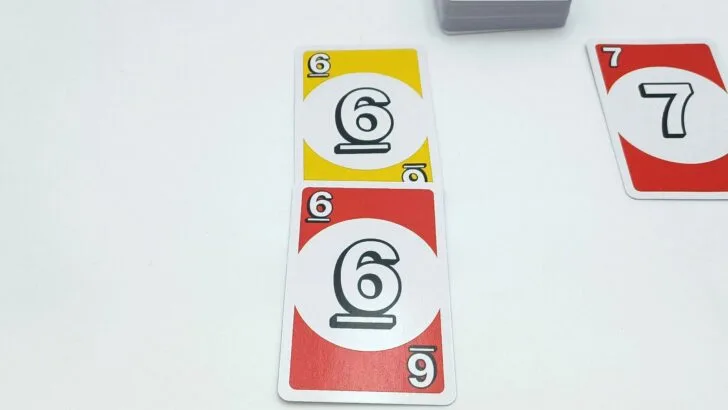
Your other option is to play two cards that add up to one of the face up cards. This is called a Double Number Match.
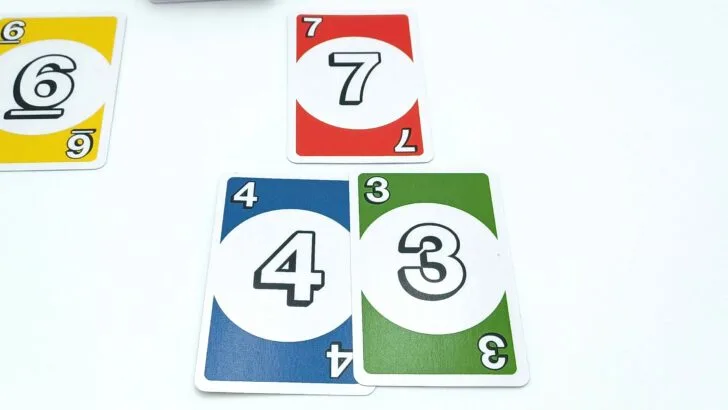
You are able to play a number match to any or all of the face up cards in the middle of the table. You can use any combination of Single Number Matches and/or Double Number Matches when playing cards. A player may not play two matches on the same face up card though.
Color Match
While you don’t have to match color when playing cards, you will receive a bonus if you are able to match the color. The bonus the player receives depends on if they make a Single or Double Number Match.
If you play a single card that matches the number and color of one of the face up Center Row cards, you have created a Single Color Match. At the end of your turn you will get to lay one of the cards from your hand face up on the table. After laying down this card there will be three cards face up on the table.
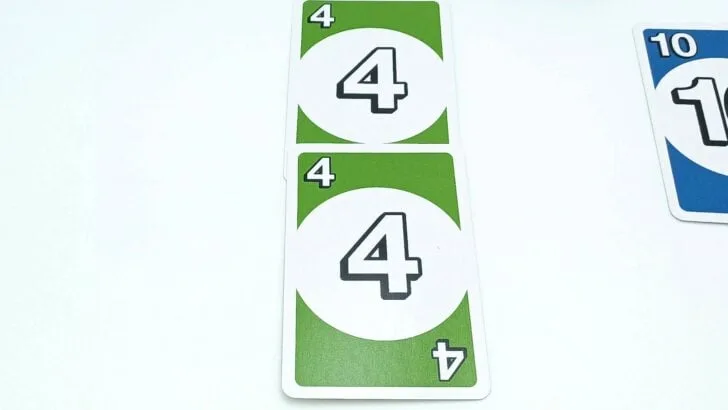
If you play two cards that add up to one of the face up cards and both cards also match the face up card’s color, you have created a Double Color Match. At the end of your turn you will get to lay one of the cards from your hand face up on the table creating another pile to play to. All of the other players must also draw one card from the draw pile.
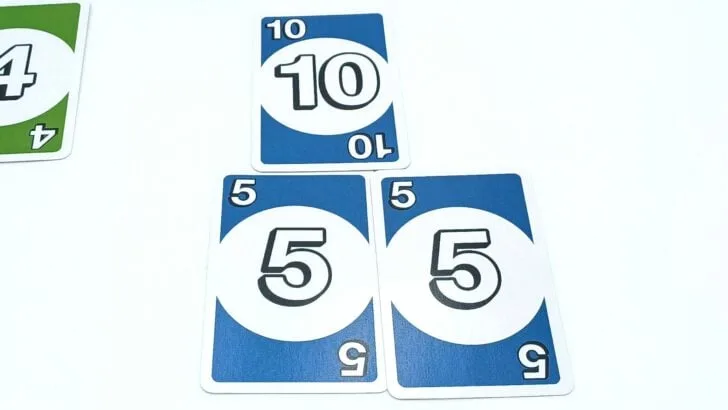
Draw A Card
If you are unable or don’t want to match the face up cards, you will draw a card from the Draw Pile.
After drawing you may use the card you just drew to make a match with one of the face up cards. You may choose not to play a card even if you can use it to play a match.
If a player does not match any of the cards on the table, they will get to play one of the cards from their hand face up on the table. This will create another Center Row pile to play on.
End of Turn
After you play a card(s) or draw a card, your turn ends.
All of the cards from the matched pairs are removed from the table and placed into the Discard Pile.
If there are less than two face up cards in the Center Row, take a card(s) from the top of the Draw Pile and place it face up on the table. If you get to lay down a card(s) due to a Single and/or Double Color Match, you will lay it face up after cards from the Draw Pile have been added.
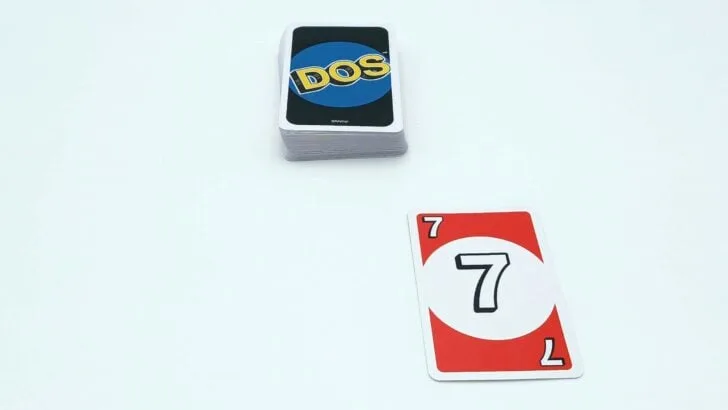
Play then passes to the next player clockwise.
Cards of DOS
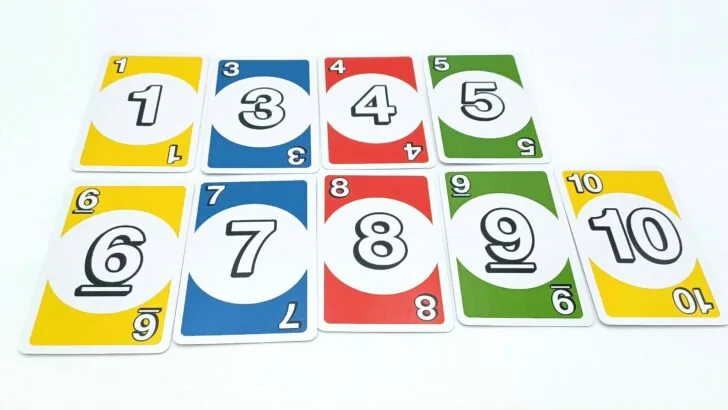
Number
Number cards have no special action. You may only play a number card if it matches the number of a Center Row card when played in a Single or Double Number/Color Match.
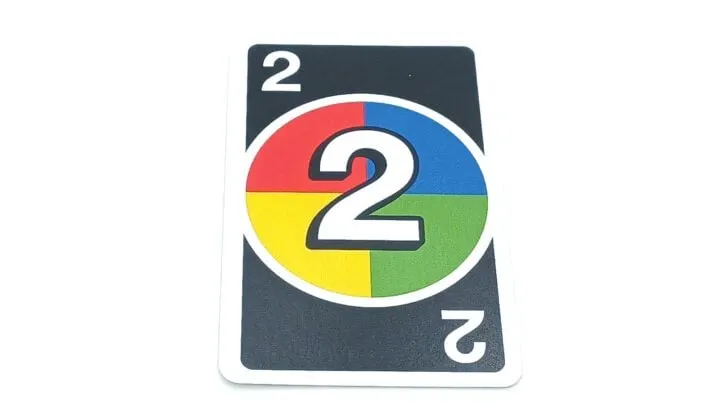
Wild DOS
A Wild DOS card will count as a two of any color. When you play the card you get to decide what color it is. You can choose the color of the Wild DOS card in order to create a Single or Double Color Match.
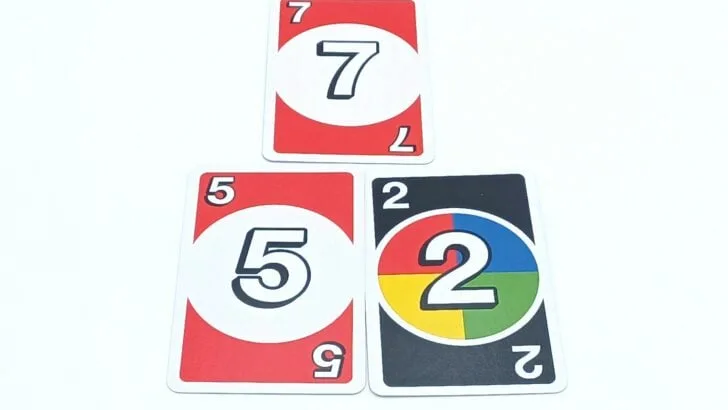
If a Wild DOS card is face up in the Center Row, you get to determine what color it is when you match it.
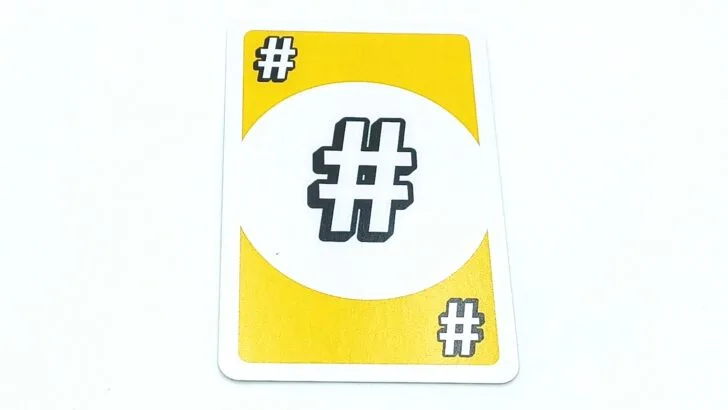
Wild #
A Wild # card acts as any number between 1-10 of the color shown on the card. When a player plays the card they determine what number it will act as.
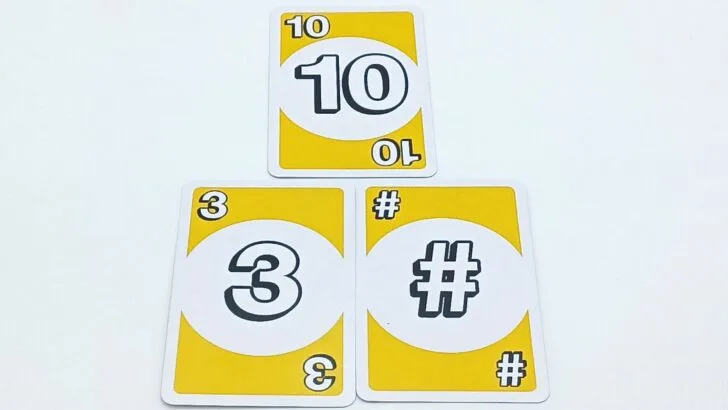
If a Wild # card is face up in the Center Row, a player chooses what number it is when they match it.
DOS
When you only have two cards left in your hand you must say DOS. If another player catches you not saying it, you will have to add two cards from the Draw Pile to your hand. You will do this at the end of your turn.
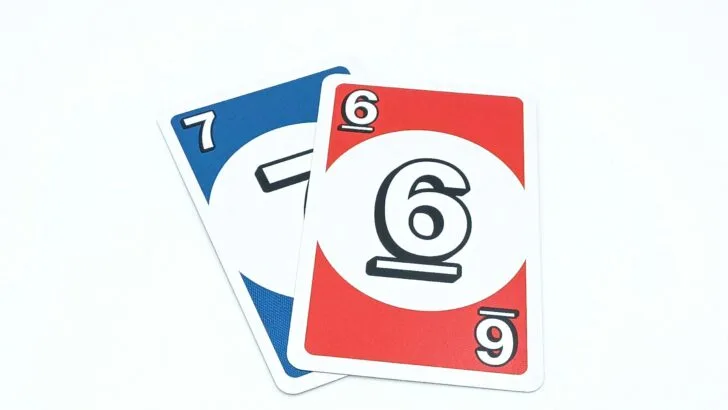
End of Round
The round ends when one player gets rid of the last card from their hand. The player who got rid of all of their cards will score points based on the cards remaining in the other players’ hands. If the player was able to create a Double Color Match on their last turn, all of the other players will draw one card which will be added to the winner’s score.
Cards are worth the following points:
- Number Cards: Face Value
- Wild DOS: 20 points
- Wild #: 40 points (The Wild # card is worth 50 points in the 2021 version of the game.)
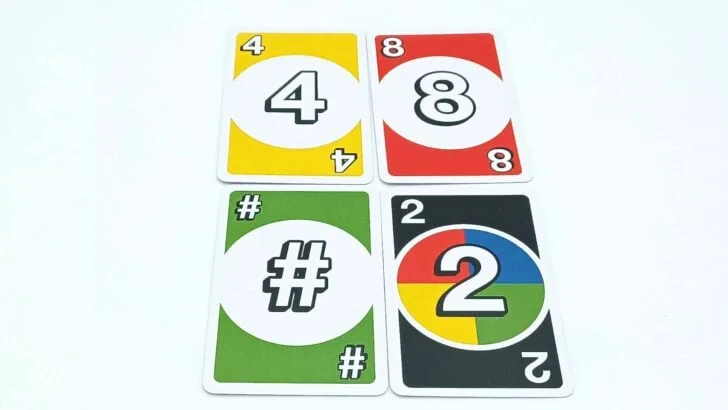
Winning the Game
The first player to score 200 points wins the game.
In the 2021 version of the game, the main way of playing the game is to just play one hand at a time. Whichever player gets rid of all of their cards first, wins the game.
Scoring is a variant rule in the 2021 version of DOS. The first player to score 500 points wins the game.
DOS FAQ
If you have any questions about how to play the game, leave a comment below on this post. I will try to answer any questions asked as best and as quickly as possible.
There is a Wild # card in the Center Row. Can I combine two cards of the same color from my hand and play them on the Wild # card in order to create a Double Color Match?
The rules say that a Wild # card in the Center Row can be treated as any number. You get to choose its number when you match it. Therefore I think you should be able to combine two cards from your hand and play them to the Wild # card. You will then make the Wild # card whatever the two cards you play add up to. The Wild # card only can go up to ten though. Therefore the two cards can only add up to number ten or lower.
For example say there is a blue Wild # card in the Center Row. You have a blue five and blue three card in your hand. You should be able to play these two cards together by making the Wild # card a blue eight. Since you played two cards of the same color that match the color of the card you matched, you have played a Double Color Match.
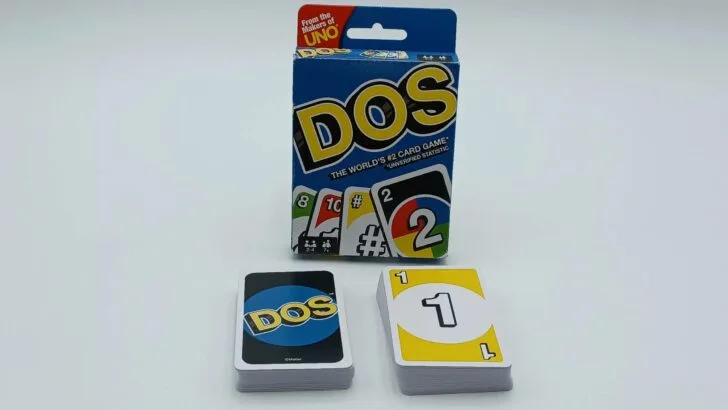
Components
- 24 Blue Cards
- 3 each of 1, 3, 4, 5
- 2 each of 6, 7, 8, 9, 10
- 2 Wild #
- 24 Green Cards
- 3 each of 1, 3, 4, 5
- 2 each of 6, 7, 8, 9, 10
- 2 Wild #
- 24 Red Cards
- 3 each of 1, 3, 4, 5
- 2 each of 6, 7, 8, 9, 10
- 2 Wild #
- 24 Yellow Cards
- 3 each of 1, 3, 4, 5
- 2 each of 6, 7, 8, 9, 10
- 2 Wild #
- 12 Wild DOS Cards
- Instructions
Year: 2018 | Publisher: Mattel | Designer: Nick Hayes
Genres: Card, Family
Ages: 7+ | Number of Players: 2-4 | Length of Game: 20-30 minutes
Difficulty: Light | Strategy: Light | Luck: High
Where to Purchase: Amazon, eBay Any purchases made through these links (including other products) help keep Geeky Hobbies running. Thank you for your support.
For more board and card game how to plays/rules and reviews, check out our complete alphabetical list of board game posts.

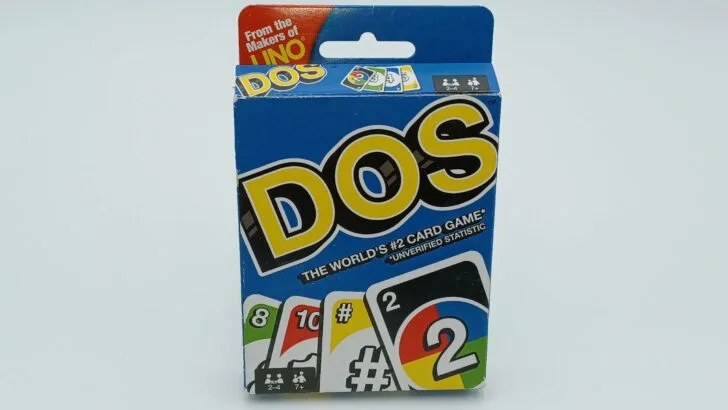
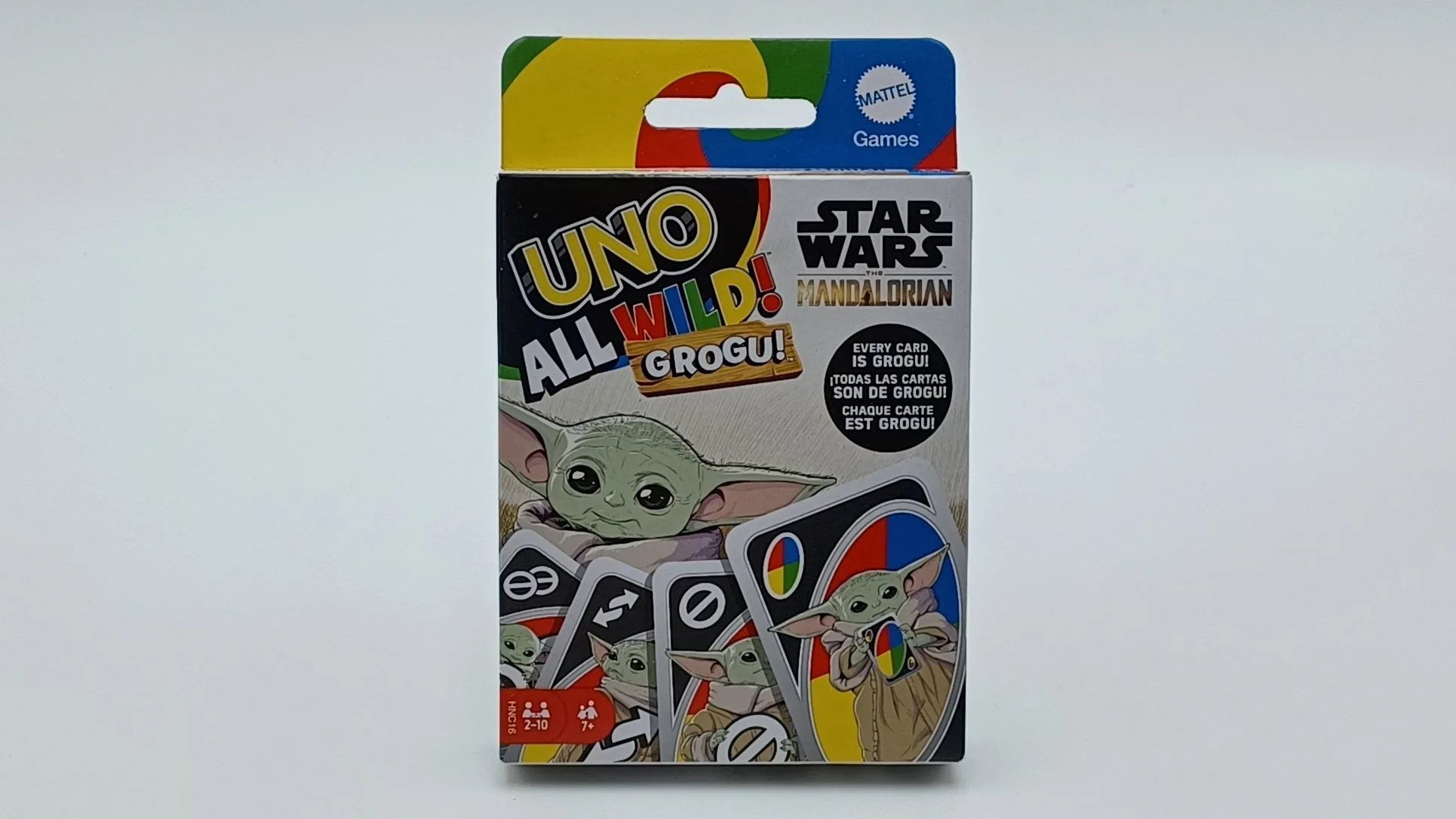
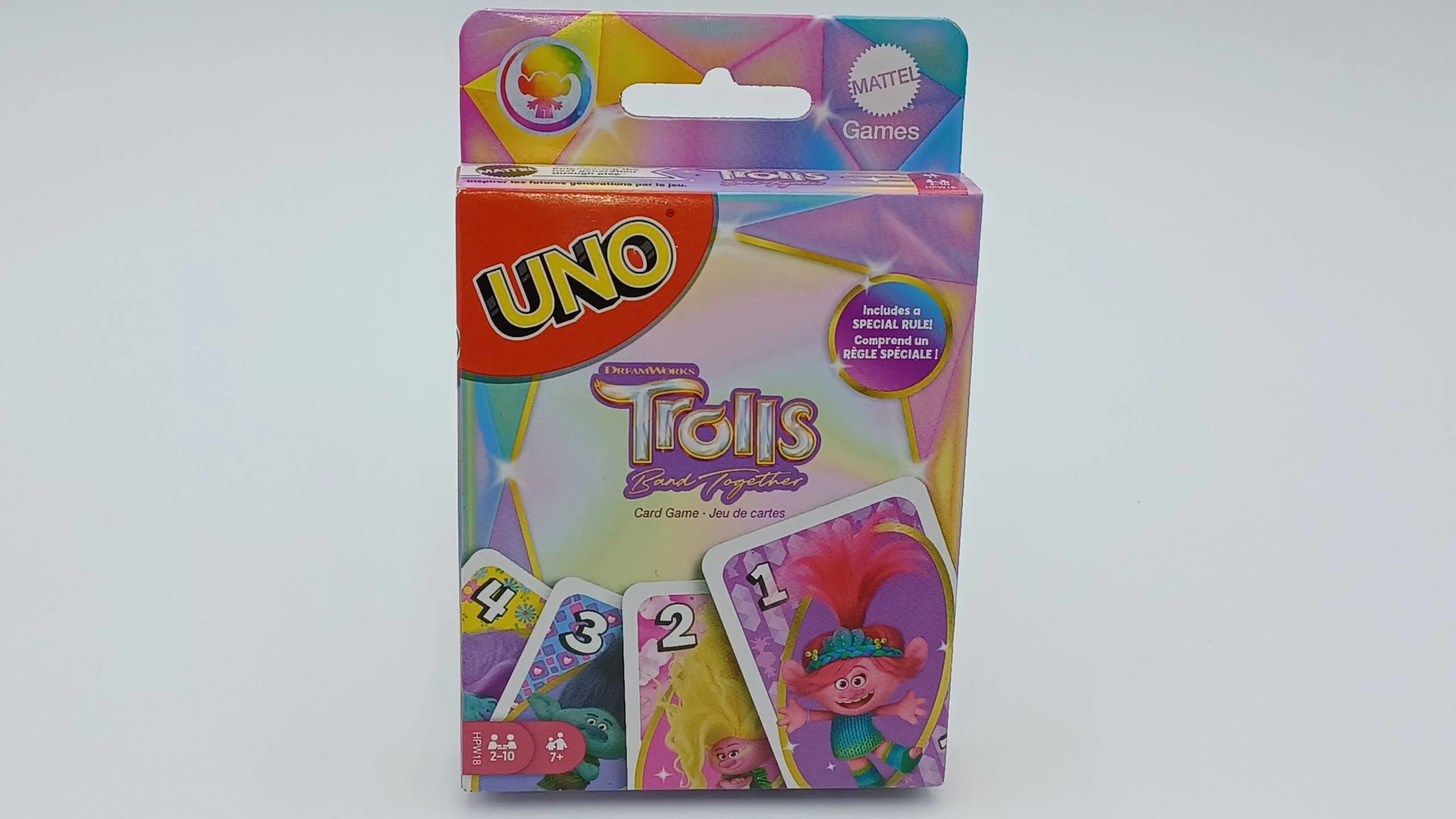
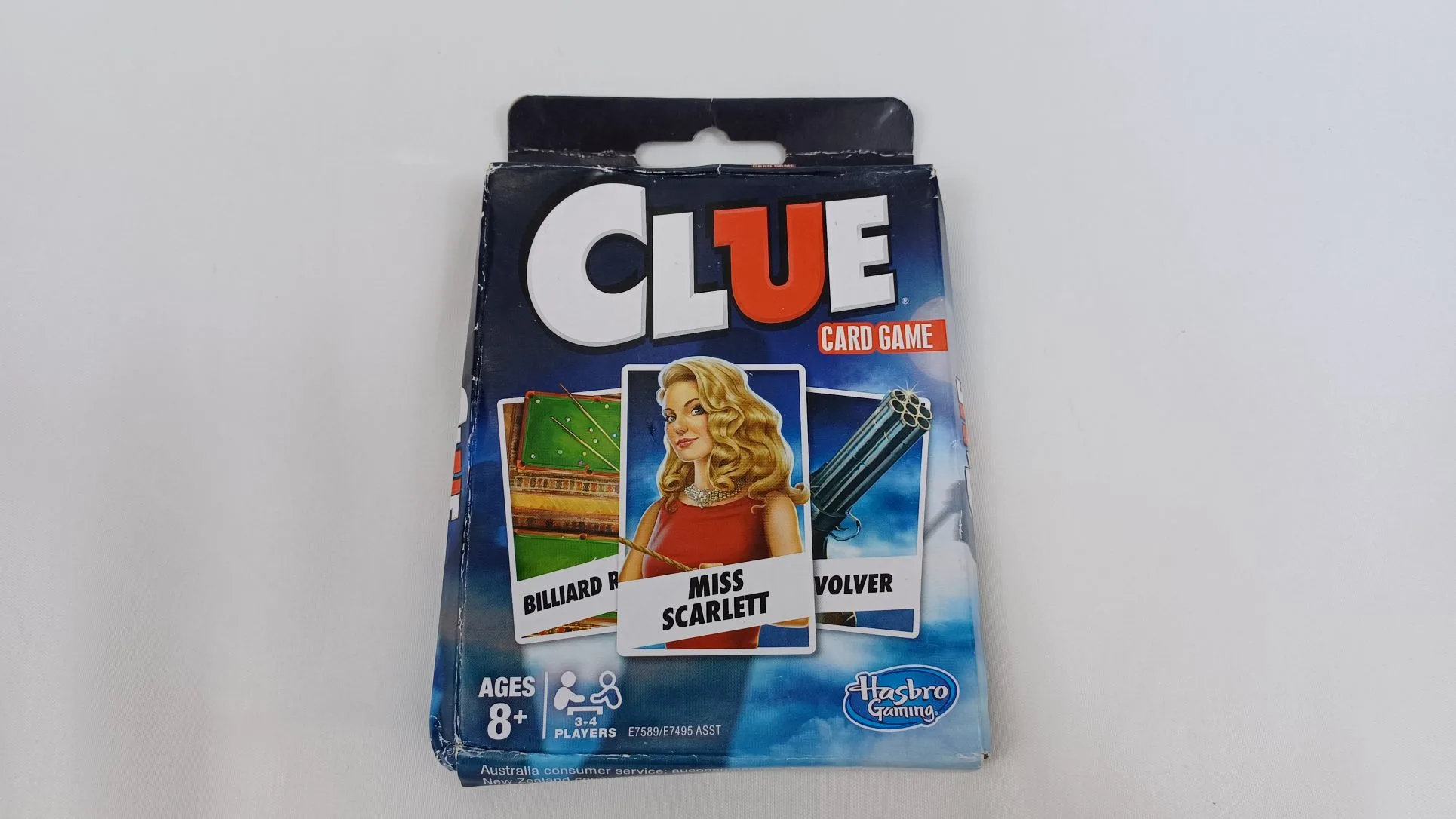
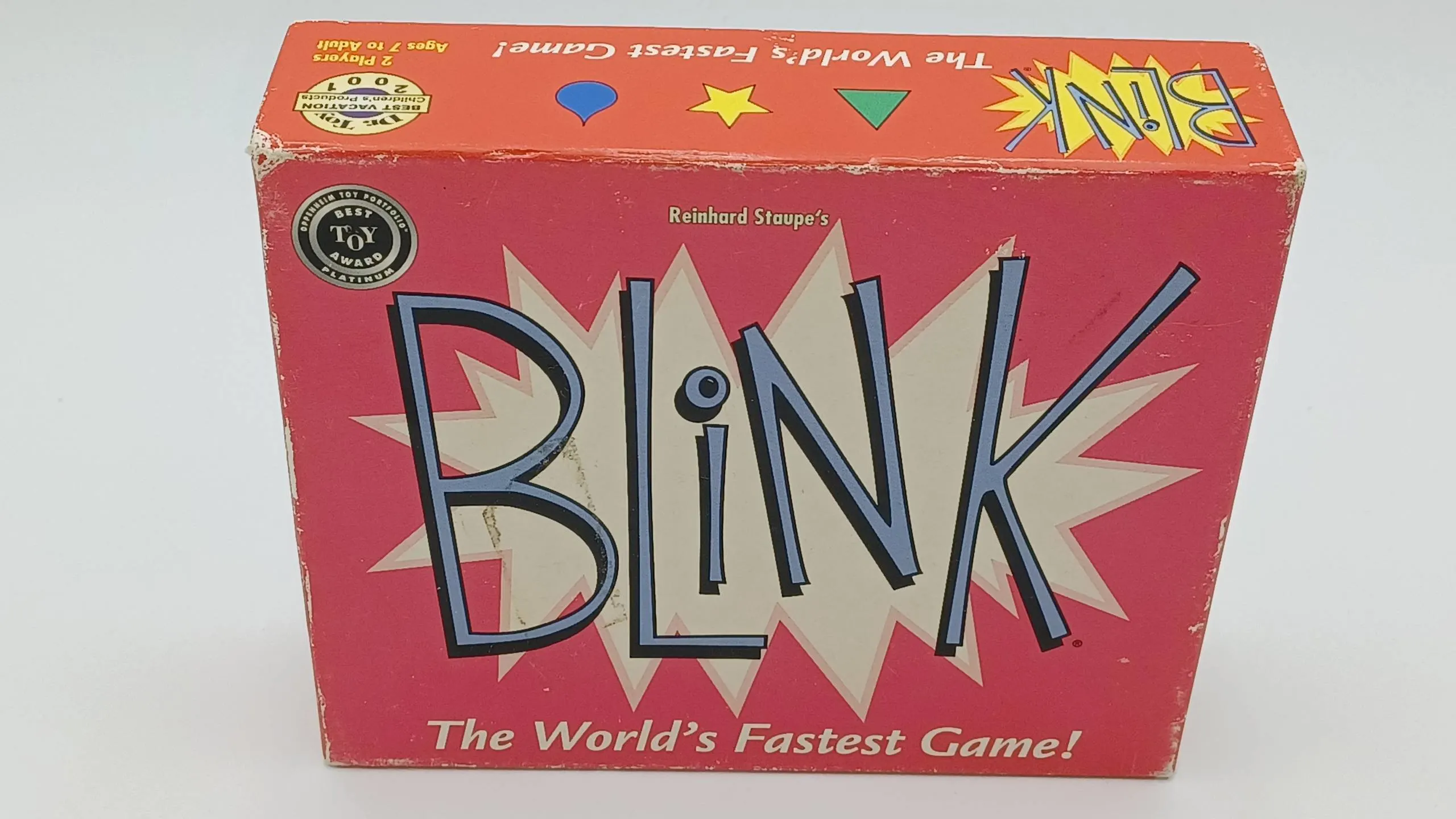
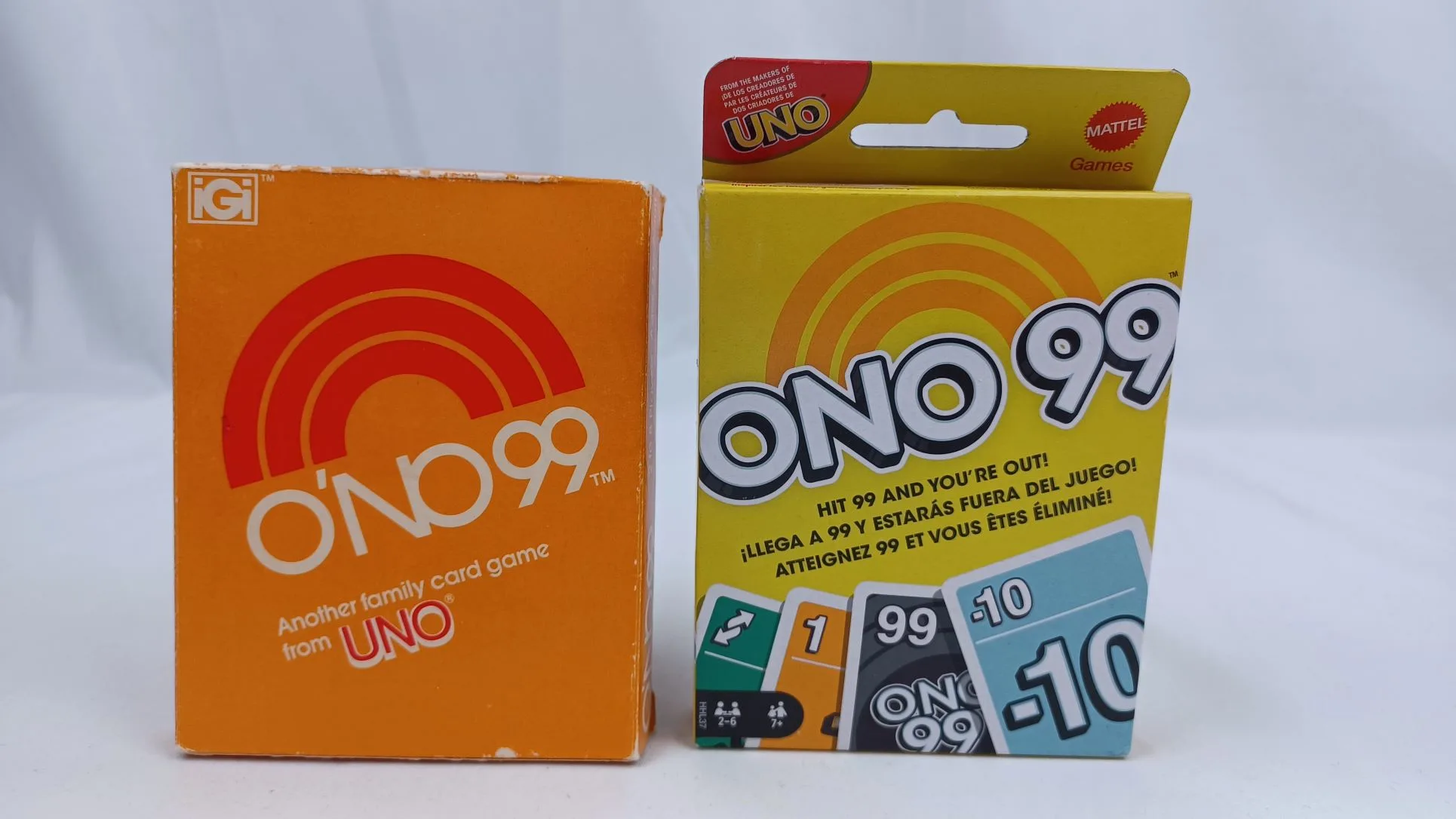
Lee
Wednesday 3rd of April 2024
I just purchased DOS at Walmart on 4/2/24. I could not figure out why my playing instructions varied from what you wrote above and, yet, there is a new, Second Edition, of this card game that Mattel issued in 2022. I finally figured out the problem that I was seeing here and if there was a way for me to photograph my instruction sheet , then I would, because it shows that Mattel actually had a "third" edition of this game, which nobody is talking about. The way to tell the difference is that the original 2018 - 2020 game has the blue perforated hanging top WITHOUT the white Mattel logo in the top right corner. This one has the original instructions that you posted here from 2018 to (December) 2020. My newly purchased game has the copyright 2021 on the back and it has the white Mattel logo on top right corner of the hanger tab. These are the First Edition cards with only the Wild 2 and Wild # cards. The instructions are the same as what you posted, except when you get the paragraph called "Winning" it states, "When a player plays through their final card, they win. Time to shuffle and play again." Two paragraphs after that, they have a variation of this game called "Keeping Score (Optional Victory Method)" where they also give more points than what the original 2018 game did. It states that the "Wild # .... 50 points." Whereas yours gives 40 points. Under that, they raised the final score to 500, "Keep a running tally fo each player's points from hand to hand. When a player reaches 500 points, then are the winner." These are the only two differences in playing the game verses the original 2018 instructions. Mattel came out with a new card set in the Second Edition later in 2021, which has the reverse card and other new ones. The instructions are completely different too. Could this "third" edition, as I call it, become a collector's item some day? I went back to Walmart and bought a new unopened one just to save it and see what develops.
Eric Mortensen
Friday 5th of April 2024
Thank you for your comment as it was quite informational.
For some games Mattel has changed the rules over time. Usually they are only minor differences, but DOS is a game that they have made some pretty significant changes. I have actually been looking for a second edition of DOS to update this post since the gameplay is so different, but I haven't come across one yet.
Your information on how to spot different editions was very helpful. I am going to update the post so other people can figure out which version of the game they own. I will also update the rules to note that the end game conditions have changed between the editions.
As for whether the game will be collectible, I am not sure. I am guessing what happened was that your version was printed after the original version but before the second edition. I am guessing it was in a warehouse/storage for a while before it was put out. They ended up tweaking some of the rules for your edition, but mostly kept it the same. Shortly after they released your edition, the second edition came out where they changed the game pretty significantly. Since the game was probably only printed for a year or so, it is going to be more uncommon than the other versions of the game. Whether it becomes valuable/collectible, depends on whether people keep liking DOS or if it is a game that most people forget about. It also depends on how many copies were made in that year or so that it was in production.
Once again I appreciate your comment as it was really helpful.
DOS Card Game Review - Geeky Hobbies
Thursday 7th of September 2023
[…] out our full DOS how to play guide for more details on the […]
Joe
Monday 11th of January 2021
What are your thoughts about being able to play 2 cards from you hand on a wild# card in center row for a double color match. For example if a blue wild# is in center row and you play a blue 5 and blue 3 would that be considered a double color match?
Monday 24th of April 2023
@Joe, Yes, absolutely you can and get the double color match (if all three cards are the same color).
Eric Mortensen
Tuesday 12th of January 2021
I will preface this by saying that I haven't played the game in quite a while and I don't have the game in front of me for quick reference of the official rules.
I personally would say that it should count as a double color match as you can make the wild # card any number of its designated color. Therefore if you play two cards of that color you can make the wild # card whatever the total is of those two cards.
As the rules didn't seem to specifically address this situation though I think it is something that should be decided by your own group's house rules. If your group thinks it should count, it should count or vice versa.
Ben
Thursday 7th of January 2021
The author of this review absolutely nailed every aspect. Reading the review felt like I wrote it. Well done, well explained and you helped confirm we were playing by the rules correctly as I couldn’t believe how quickly the rounds were ending...particularly with only 2 players.
CC
Saturday 14th of November 2020
We are questioning this from the 2017 instructions we have: Suppose you can't play, so you draw a card. The rules say "If you have drawn and still cannot (or do not want to) make a match, lay one card from your hand face up in the center row." We don't see what is the point of this. It's like getting a bonus for doing nothing. What's the reasoning behind this? We're thinking of dispensing it in a "house rule."
Eric Mortensen
Monday 16th of November 2020
If I had to make a guess at the logic behind the rule, I would guess it would have to do with the fact that by adding another card to the center row you are making it easier for one of the other players to make a match on their turn. The player laying the card face up on the table benefits from getting rid of one of their cards. All of the other players potentially benefit though from having another card that they can play off of. This will make it easier for them to get rid of more of their cards. This is just a guess at why this rule is in place though.
If you don't like the rule I see no reason why you couldn't take it out as I don't think it would have much impact on the game if it wasn't there.